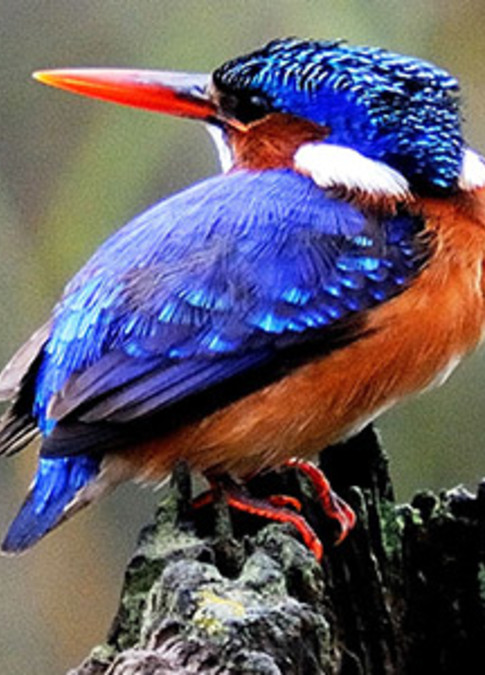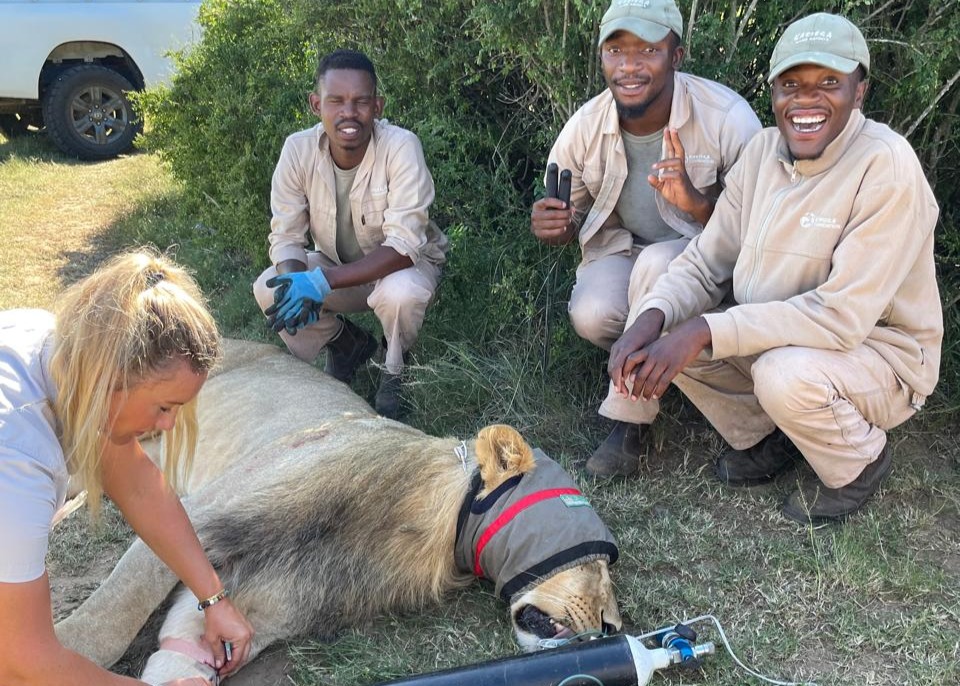Lion Conservation at Kariega
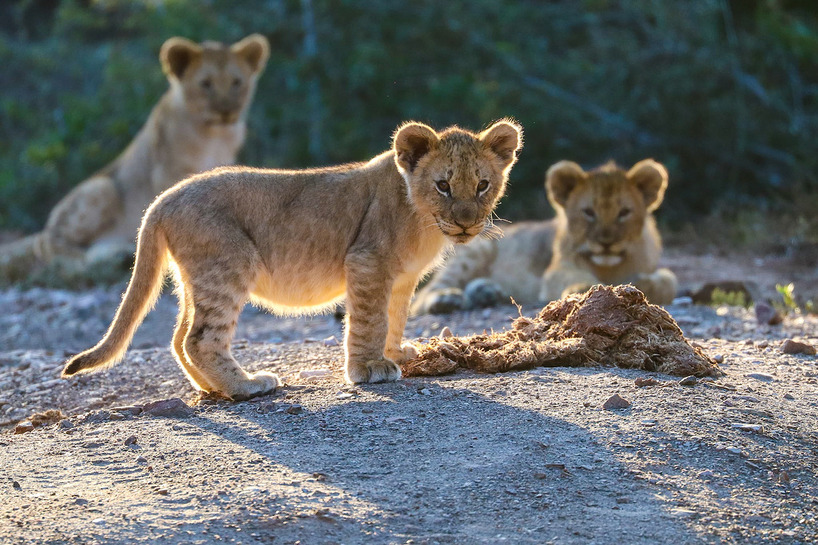
Historically, the Cape lions were found in abundance in the Eastern Cape. However, this variation of the African lion was hunted to near extinction in the late 1800s, with the last sightings occurring between 1850 and 1870. Lions were first introduced into Kariega Game Reserve in 2004. As we celebrate 21 years of lions on the reserve in 2025, we welcome the birth of four cubs—a perfect symbol of this milestone.
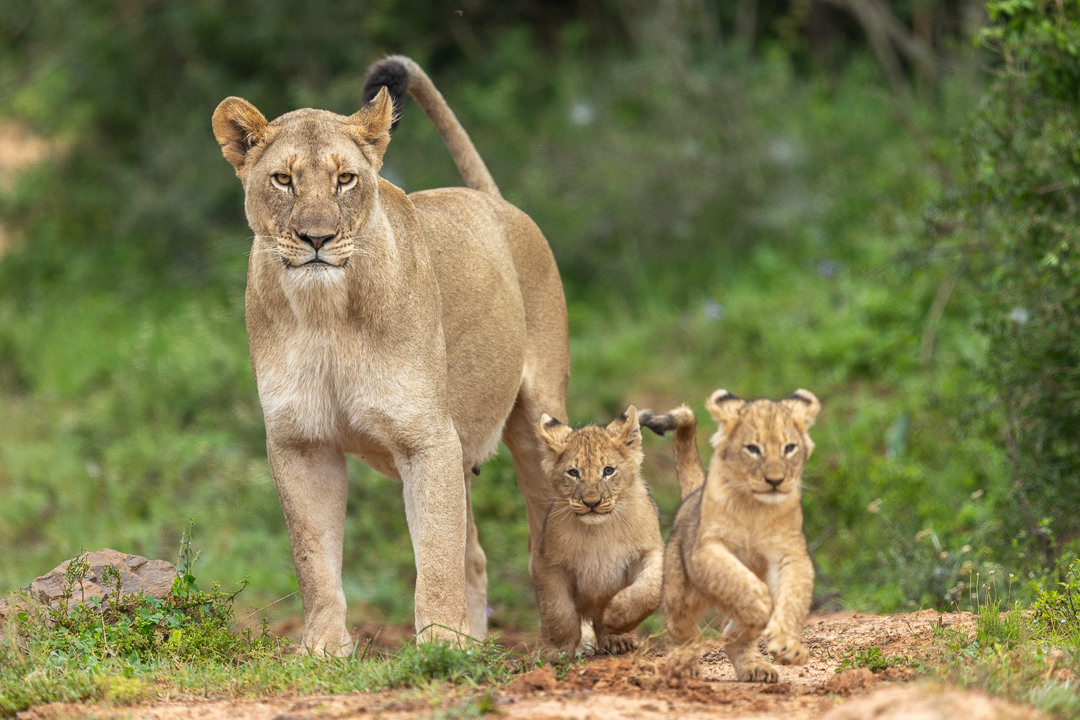
Lions are Apex Predators
Lions are apex predators, which means they are at the top of the food chain, have no natural predators and play a crucial role in maintaining ecosystem health. While their primary function is regulating prey populations to prevent overgrazing, they contribute in even more profound ways:- Promoting biodiversity: Due to lions regulating prey numbers, they ensure that species do not outcompete each other and become dominant. This results in a greater abundance of species in an area.
- Trophic cascades: The presence or absence of lions impacts the ecosystem across all trophic levels, affecting plants, soil, parasites, and species dynamics. At Kariega, lions influence prey movement. Antelope species relocate frequently to avoid predation, allowing grazed plants to recover, exposed soil to regenerate, and parasite loads to remain lower than in predator-free areas.
- Genetic importance: Lions prey on the weak and sick, which strengthens the gene pool, ensuring that only the strongest survive.

New Cubs a Conservation Success
The arrival of our new cubs is estimated to have occurred on 16 January 2025, with the first sightings recorded on 17 March when they reached eight weeks old. At birth, lionesses keep their cubs hidden in a secure location, moving them approximately 100 meters at a time. By six weeks, tracking data shows movement distances increasing to 300 meters, indicating that the cubs are following their mother rather than being carried.
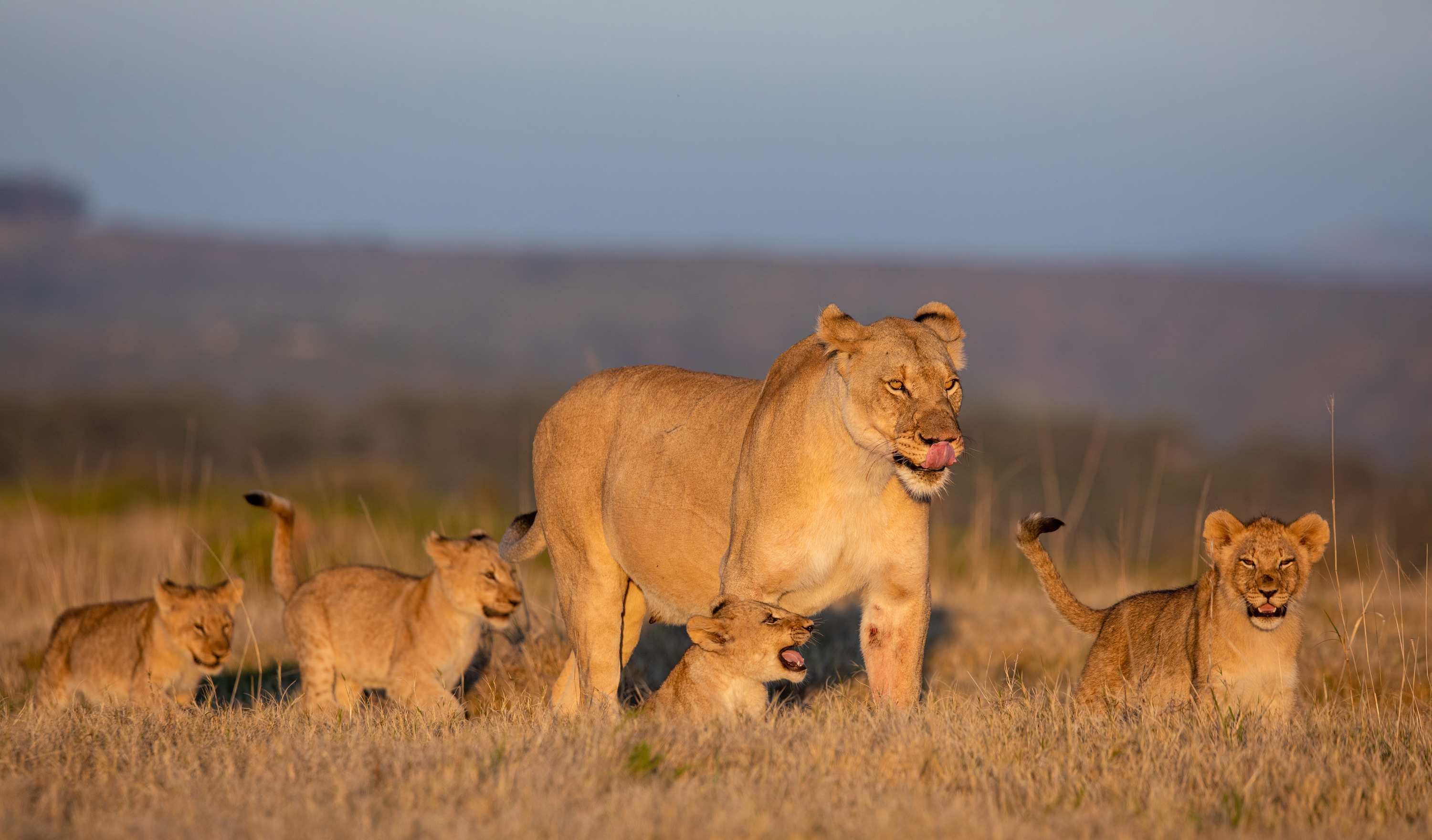
Genetic Diversity and Population Sustainability
Our lion conservation strategy focuses on maintaining, restoring and expanding habitats; preserve biological diversity, including genetic diversity; enhancing ecosystem services and protect species from extinction.
To promote genetic diversity, Kariega actively prevents inbreeding. Mating pairs are monitored, and genetic testing confirms paternal identity. With multiple unrelated lion coalitions on the reserve, if one coalition member fathers a litter, steps are taken to ensure that a different male will breed with these cubs when they reach maturity.
Healthy genetics is essential as it assists species with adapting to changing environments, reduces the risk of inbreeding and creates a resilience to diseases or other threats.

Collaring and Monitoring
Currently, there are four lion groups on the reserve, with the goal of establishing a pride. Two dominant male lions, with one being the father to the newly born cubs.
Two young nomadic male lions, which are three and a half years old. By the time our new cubs are ready to reproduce, these males will be old enough to take over dominance from the current male lions, facilitating genetic diversity.
Three sub-adult lions, which are the siblings of our new cubs. The two males and one female are two years old, with the two young boys being re-homed to a reserve in Natal within the next six months as part of a meta-population strategy and with the hope that the young female will rejoin her mother and new cubs.
Our fourth group is the lioness with four cubs.
Both male coalitions have one male with a collar, the female with cubs has a collar and the sub adults are too young for collars. All lions are monitored by examining their collar data; sightings are reported and the anti-poaching unit as well as the ecology team follow up with any reports of lions that are out of the ordinary.
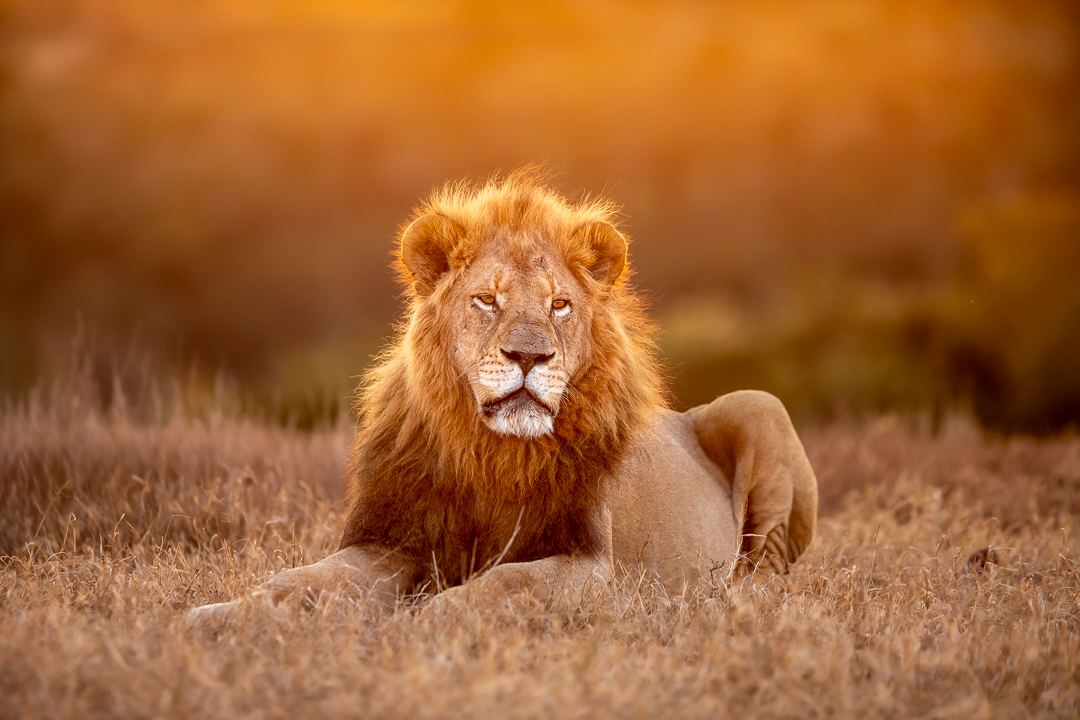
Managing the Lion Population
Just as genetic diversity is essential, preventing overpopulation is equally important. Too few lions lead to unchecked prey populations, which can overexploit resources like vegetation, soil, and water. Conversely, too many lions reduce prey numbers excessively, leading to an imbalance that can negatively affect biodiversity.
To prevent overpopulation and genetic bottlenecks, ethical management strategies are implemented. The first option is contraception versus relocation. In the case of our sub-adults, the males are being relocated, preventing inbreeding at Kariega while contributing to genetic diversity at another reserve. When lions cannot be relocated, contraception takes place, after the female gives birth to at least one litter, to prevent unintentional consequences that result from hormone imbalances, where they remain on the reserve but cannot reproduce.

Veterinary Care and Health Monitoring
The guides, who create special educational guest experiences during safaris, also play a vital role in reporting any concerns. Once an issue is raised, the ecology team monitors the animal and consults our veterinarian, Dr. William Folds, to determine whether a veterinary check-up is needed. Treatment will include wound checks, vaccination against rabies, disease prevention and treatment against internal and external parasites.
Looking ahead
Our long-term conservation goals include sustainability and genetic diversity. We aim to replicate natural systems that allow for pride formations, which help regulate large herbivore populations, such as buffalo and giraffe. The aim is to maintain natural processes and genetic integrity through a national meta-population strategy and in so doing also provide a great tourism value.
Our lions, together with black rhino and elephants, serve as a driving force for land expansion and habitat connectivity in the Albany region of the Eastern Cape.
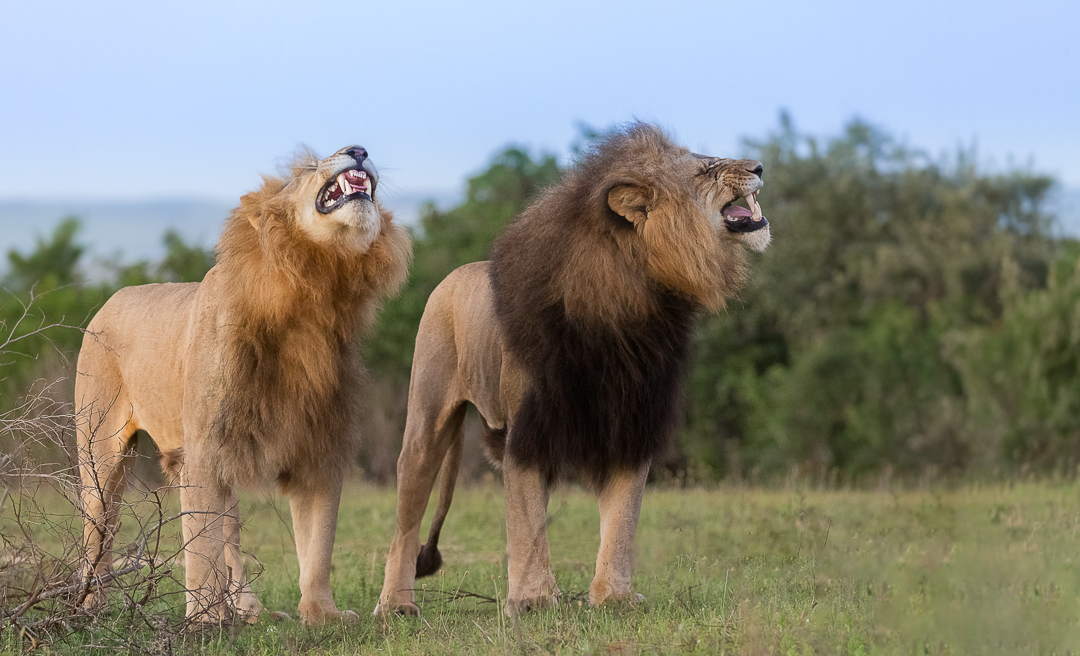
Be part of our pride
Kariega Game Reserve was established in 1989, initially spanning 660 hectares. By 2025, the reserve has expanded to 11,500 hectares. This means that the original reserve was 6% of what the reserve is today —an incredible testament to our dedication to conservation and habitat expansion.
As we celebrate 21 years of lions at Kariega Game Reserve, we are reminded that conservation is an ongoing journey; one that requires dedication, passion, and the support of people like you. We would like to thank the Kariega Foundation and African Cat Project for amazing support with our big cat conservation. Every roar echoes a story of resilience, and every step forward secures a future where wildlife and wild places continue to thrive.
Join us in protecting this legacy by visiting the Kariega Foundation website or scan our QR code below.


A big thank you to senior field guide Brendon Jennings and past guest Clare Cheeseman for the wonderful images!

